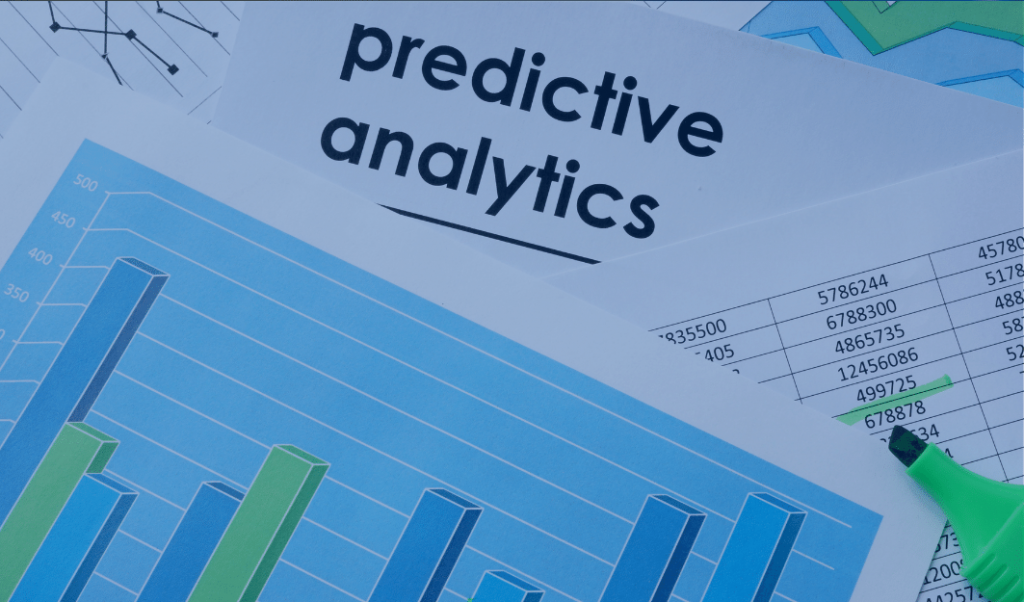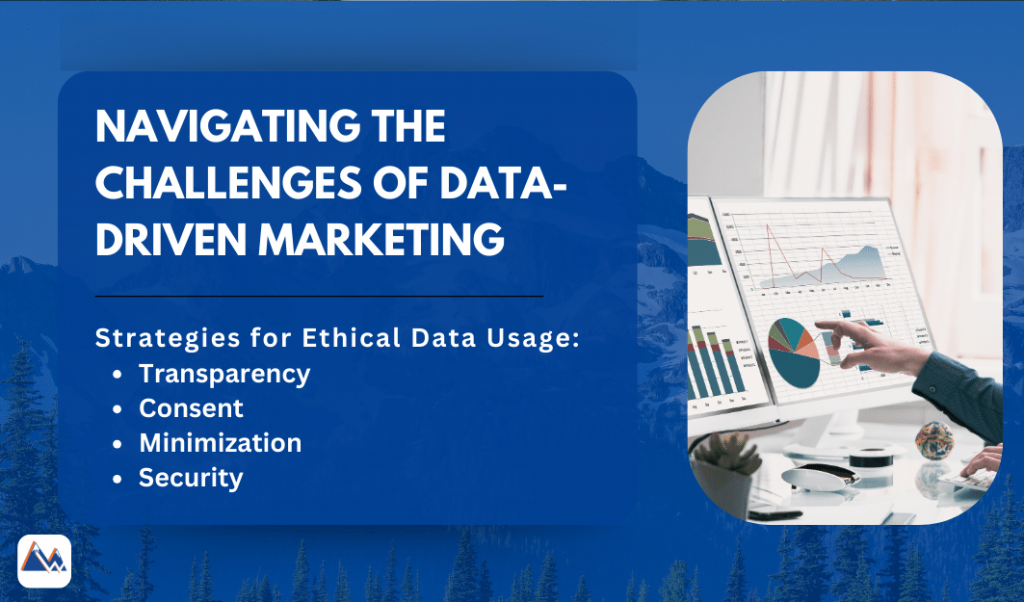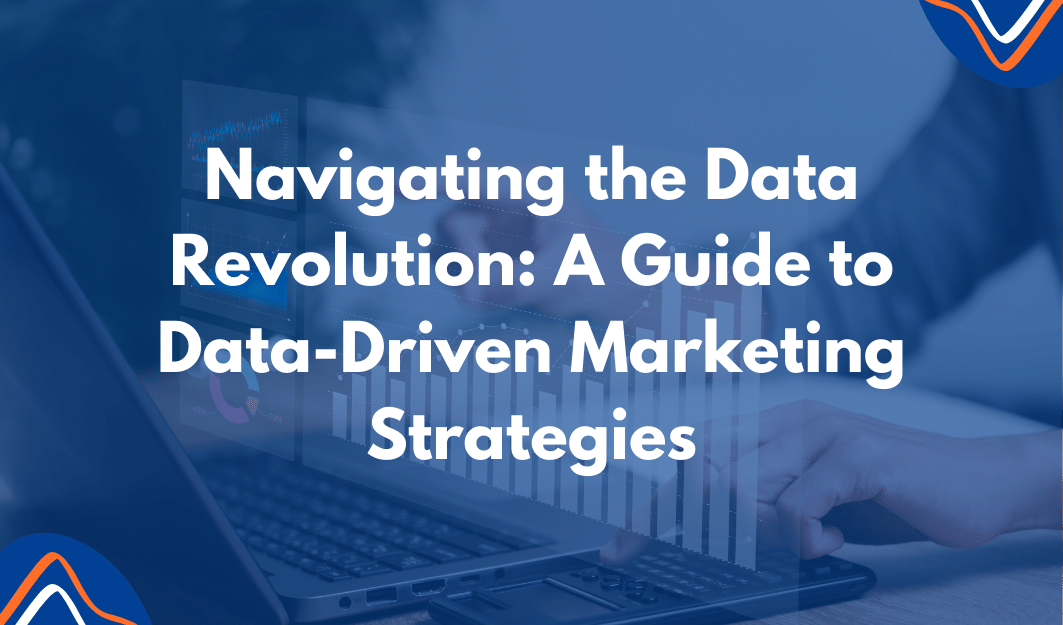Navigating the Data Revolution: A Guide to Data-Driven Marketing Strategies
Are you using data-driven marketing to transform your strategy & boost ROI? Learn how better understanding your customers can provide valuable insights.
In the digital age, data reigns supreme. Every click, tweet, and purchase contributes to a massive pool of information that can be decoded and analyzed. This new paradigm shift presents both opportunities and challenges for businesses of all sizes. After we finish our discussion on data-driven marketing, you will have the power to create innovative strategies and find ways to integrate them into your marketing and SEO strategies while overcoming any obstacles.
Table of Contents

Introduction to Data-Driven Marketing
The Evolution of Data in Marketing
Over time, our understanding of effective marketing strategies has improved. In the past, marketing was based on intuition and guesswork. However, with the introduction of consumer-centric practices, the industry has undergone a transformative shift, leading to the development of data-driven marketing. This shift has the power to inspire and motivate us to rethink our marketing strategies.
Previously, tracking consumer trends accurately and predicting outcomes was impossible without data-led decisions. This knowledge is essential for businesses to establish a foothold in busy marketplaces.
Key Components of Data-Driven Marketing
When delving into strategic planning, data-driven marketing requires three crucial components:
- Data Collection: Gather relevant information about customer behaviors like purchasing habits or preferences.
- Data Analysis: Use statistical procedures to analyze numbers and understand significant patterns.
- Actionable Insights: Craft agile implementation strategies based on data, not assumptions.
These building blocks compose the foundation for savvy marketers eager to keep up with rapidly evolving consumer preferences.
How Data Has Changed Traditional Marketing Strategies
Marketing used to be a one-size-fits-all approach. Companies would broadcast generic messages, hoping that they would resonate with someone within the audience. However, with technological advancements like big data, marketing has taken a different direction. Marketing strategies are tailored according to distinct consumer personas created using rich and insightful data. This approach revolutionizes the conventional mass approach and paves the way for highly personalized targeting, which results in improved customer satisfaction levels and a better return on investment for brands.

Predictive Analytics: Anticipating Market Trends and Consumer Needs
Foundations of Predictive Analytics in Marketing
Predictive analytics involve statistical algorithms and machine learning techniques to analyze historical data and predict future outcomes. In marketing, this method helps businesses anticipate market trends, understand customer sentiment, and forecast campaign results. This process is not just about raw data analysis; it’s about weaving data into actionable marketing strategies.
Best Practices for Implementing Predictive Analytics
To effectively utilize predictive analytics in your marketing strategy, consider following some of these best practices:
- Define clear objectives: When working with data, it is crucial to define clear objectives. Ask yourself what you wish to predict or learn from your data. This clarity will guide the analysis and ensure you focus on the most relevant insights.
- Choose relevant datasets: Use quality data that captures the nuances of your customers and the overall market.
- Collaboration between data scientists and marketers: When dealing with large amounts of data, marketers can work closely with data specialists to gain valuable insights.
Case Studies of Predictive Analytics in Action
Predictive analytics have played a crucial role in improving marketing strategies for numerous businesses. A prime example is Netflix, the streaming giant, which accurately recommends shows to its viewers by analyzing their viewing habits using predictive models. Another example is Starbucks, which leverages predictive analytics to optimize its store locations and predict customer traffic based on various factors, including local demographics and geographical data. These real-world examples demonstrate the power of data-driven marketing and how it can be effectively implemented. Large businesses likely influence your decision making every day by integrating predictive analytics into their marketing and business strategies!
Leveraging SEO and Analytics Tools for Predictive SEO Analysis
Tools like SEMRush and SERanking enhance predictive analytics by providing in-depth insights into market trends and consumer search behavior. They offer a wealth of data on keywords and competitor strategies, which are invaluable for predicting future market movements and consumer preferences.
- Utilizing SEMRush for Market Trend Analysis: By analyzing search trends and keyword performances within SEMRush, marketers can identify emerging topics and interests in their industry, enabling them to anticipate and capitalize on these trends.
- SERanking for Competitor Benchmarking: Understanding competitors’ strategies, as seen through SERanking, can offer foresight into market shifts. It provides insights into the keywords competitors are targeting, the success of their content strategies, and their backlink profiles.
SEO tools can harness data to tailor content to customer preferences and answer the right questions. For instance, an e-commerce site might use SEMRush to analyze consumer search trends in product categories, predicting which products will increase demand.
Finding valuable data is crucial for your business, but applying it creatively to your marketing plan is equally essential.

The Intersection of Data Science and Marketing Creativity
Let’s explore the intersection of data science and marketing creativity, where binary digits and storytelling combine to reach consumers.
Using Data to Fuel Creative Marketing Campaigns
Data may often seem abstract, but it can be a springboard for captivating marketing campaigns when creatively applied.
The Synergy of Data and Creativity
Data alone is like dry timber; it holds potential energy but needs a creative spark to ignite it. Simply collecting information about customers’ behaviors and preferences is not enough; the critical factor is how you use that information. The synergy between data and creativity is where the driving force lies.
As marketers, we can tailor messages granularly by deeply understanding customer profiles, leading to more impactful campaigns. For example, if your data shows that a particular group of users primarily interacts with your mobile app late at night, you could create customized advertising like a ‘Late Night Special.’ Combining data and creativity unlocks endless opportunities for innovation and progress, driving success in today’s digital landscape.
Balancing Creativity and Data in Campaign Design
Successful marketing campaigns require a balance of data insights and creative storytelling. Relying solely on data can lead to an impersonal and bland campaign, while relying strictly on creativity can result in content that needs more personalization. By combining the two, you can generate a marketing strategy that is both relevant and engaging. Remember that crafting a successful campaign is like composing a symphony, where the perfect blend of creativity and data crunching makes for an engaging story that resonates with its audience.

Navigating the Challenges of Data-Driven Marketing
Data-driven marketing is helpful in most cases, but marketers must address challenges to unlock its full potential. The main obstacles include ensuring data privacy and managing an overload of data efficiently. Let’s discuss these problems in detail, reassuring you that with the right strategies, you can maintain a balance between data privacy and marketing effectiveness, making you feel secure and confident in your approach.
Balancing Data Privacy and Marketing Effectiveness
In this era of data collection, consumers’ pressing concern is protecting their personal information. Marketers need effective strategies to utilize consumer data without infringing on privacy rights or provoking customer distrust.
Strategies for Ethical Data Usage
To navigate through the ethically grey areas, businesses can adopt four principal practices:
- Transparency: Be straightforward about what type of data you collect and how you will use it.
- Consent: Seek permission before gathering any user information.
- Minimization: Collect only what is necessary for your purpose.
- Security: Implement robust security measures to guard against breaches.
These steps are not just best practices; they’re also increasingly becoming legal requirements under regulations like GDPR (General Data Protection Regulation) in Europe.
Building Trust through Transparent Data Practices
To establish a strong relationship with your users, it is essential to demonstrate that you value their privacy. One way to achieve this is by implementing transparent and easy-to-understand privacy policies. When your customers feel confident and secure sharing their personal information with your brand, they are more likely to respond positively to your marketing efforts. Therefore, building trust with your users by respecting their privacy and communicating this clearly is crucial.
Overcoming Data Overload: Strategies for Efficient Data Utilization
Due to the sheer volume of available data, the phenomenon of ‘data overload’ can obscure rather than enlighten if not appropriately managed.
Identifying Key Data Metrics
Focusing on metrics relevant to your goals reduces the noise from irrelevant data. These metrics may include conversion rates, customer acquisition costs, and ROI (Return on Investment). Concentrating on these markers can extract valuable data that can impact your strategy and ultimately improve your results.
Tools for Managing Data Overload
Numerous tools can help manage data overload effectively. These include data management platforms (DMPs), customer relationship tools (CRM), and marketing automation software. These resources can help organize, analyze, and visualize data, transforming raw numbers into actionable insights.
Cultivating a Data-Driven Culture in Marketing Teams
Creating a culture that supports data-driven marketing can be challenging. To overcome this challenge, it is important to encourage curiosity about analytics insights, foster open discussions, and brainstorm ideas based on reliable data. The success of any data-driven initiative greatly depends on this human factor—creating an environment where everyone values decisions grounded in reliable data.
Although navigating these challenges may seem daunting, with careful planning and strategic implementation of ethical practices and efficient utilization techniques, marketers can successfully harness the potential of data-driven strategies. By building trust through transparency and effectively managing vast datasets, organizations can benefit exponentially from innovative marketing campaigns based on solid data foundations.

Humanizing Data-Driven Marketing
Marketing should appeal to humans’ emotions and needs while leveraging advanced technologies, which becomes increasingly crucial in data-driven strategies.
Balancing Metrics with a Human Touch
Marketing strategies rely heavily on data in today’s world. However, it’s important to remember that this data represents real people with diverse emotions and unique experiences. Marketers must balance data-driven metrics and a more personalized, human element to connect with customers effectively. Creating emotionally engaging content is essential to resonate with audiences and have them buy into your brand and message rather than overwhelming them with cold facts and figures. To adopt a customer-centric approach, subjective factors such as customer satisfaction levels and brand perception should also be considered, in addition to measurable KPIs.
Suppose you’re running a weekly newsletter to ensure your readers are engaged with your content. In that case, it’s a good idea to ask them questions to better understand their interests and preferences. By doing so, you can tailor your future newsletters to their liking, keeping them engaged and interested in what you say. Data doesn’t have to be complicated.
The key to success is blending cutting-edge technology with the art of understanding human behavior. By using robust tools like sentiment analysis, marketers can gain insights into how customers feel about their products or services, allowing them to make necessary improvements.
Aligning Data Strategies with Business Values and Goals
Data strategies must align with company values and ambitions for relevant data-driven marketing. In today’s world, businesses can collect vast information from various sources. This data can help companies better understand their client’s needs and provide solutions accordingly. However, it’s not just about gaining a competitive edge. Organizations should also use insights obtained from analytics to drive positive change within their communities and industries.
It’s essential to ensure that all the customer data you collect or analyze complies with corporate values such as privacy protection, transparency in operations, and sustainability. Prioritizing your understanding of what’s essential for your organization and stakeholders is crucial. Doing so will help you secure loyalty while achieving your desired business objectives. Doing this can add a human touch to your data-driven marketing strategy, making it more effective and engaging.
Conclusion
Data-driven marketing has revolutionized the way marketers communicate with customers. Data is the backbone of any successful strategy in today’s marketing landscape. However, it’s crucial to balance the strength of data, ethical usage, and human touch. To excel in this approach, extracting actionable insights from data, applying technological adaptation, and having strategic planning is essential. It’s also vital to recognize that each data point represents an individual customer. By integrating SEO into data-driven marketing, you can maximize the impact and reach of your marketing campaigns, ensuring that your strategies resonate effectively with your target audience.
Working with a data-driven marketing specialist can be invaluable when designing your marketing strategy. A specialist can guide you through the complex terrain of data-driven marketing and help you unlock your brand’s full potential. By collaborating with experts in this field, you’ll gain access to exceptional data-driven marketing solutions that create authentic customer experiences anchored in intelligently used data. Contact William today to learn more about how his expertise in data-driven marketing, enhanced by strategic SEO, can benefit your business.

